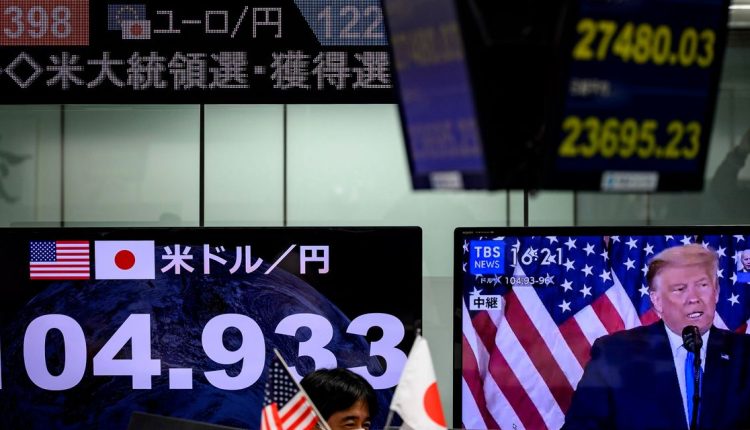Japanese yen compared to Turkish lira and Argentine peso, by Deutsche Bank analyst, as yen nears 33-year low
File this one under ‘things you hear at the bottom’.
A Deutsche Bank analyst compared the Japanese yen to infamously troubled currencies like the Turkish lira and Argentine peso in a note shared with clients and financial media on Wednesday.
The Japanese currency
USDJPY,
has fallen 15% against the U.S. dollar in 2023, adding to its steep losses from 2022 as it tumbles toward a 33-year low, according to FactSet data. It was trading higher against the greenback on Wednesday, with the dollar down 0.4% at 151.10 yen.
In the note arguing against direct interventions to support the flagging yen, George Saravelos, Deutsche Bank’s global co-head of currency research, said the comparison to the peso and lira was based on two factors: domestic money flowing into foreign assets, and Japan’s unattractive real yields.
The yen’s dramatic decline has stoked speculation that the Bank of Japan might soon tighten its easy money policy stance as inflation accelerates to its highest level in about a decade and thereby help to push the yen higher once again. In 2023, Japan had an average inflation rate estimated at 2.73%, marking the highest rate of inflation in Japan in almost a decade.
Earlier this week, the BoJ announced at its policy meeting that it would raise its cap on the yield of the 10-year government bond. Still, it’s the only major central bank that has kept its policy interest rate in negative territory, bucking a global trend.
Due to the BoJ’s recalcitrance, “Japanese intervention to defend the yen will at best be ineffective and at worst make the situation worse” by potentially pushing real yields in the U.S. even higher.
Why? Because Japanese authorities would need to sell some of their massive stash of Treasurys to boost the yen, and that would likely push yields in the U.S. higher, since bond yields move inversely to prices.
Real yields, according to Saravelos and many other macro analysts, govern most shifts in currency-market exchange rates. Give this, the only reliable strategy for lifting the yen out of the doldrums would for the Bank of Japan to completely abandon its lax policy stance by hiking its policy interest rate and further loosening its grip on its domestic bond market.
Real yields represent the level of countries bond yields after the level of inflation has been subtracted. It represents how much bonds or interest rates return once inflation has been factored in.
“The ‘solution’ to therefore stabilize the yen is simple: the Bank of Japan needs to stop QE and start hiking rates,” Saravelos said.
Read the full article here

